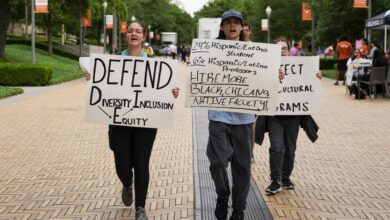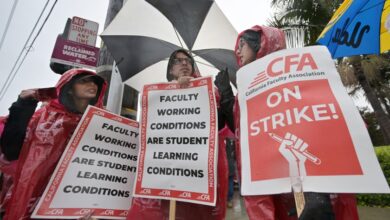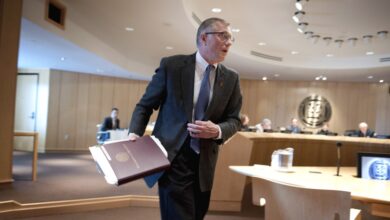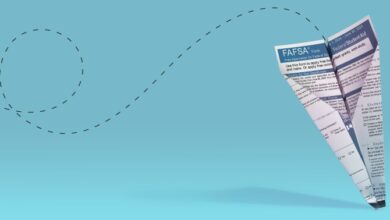Colleges Are Using Federal Money to Wipe Away Unpaid Student Balances
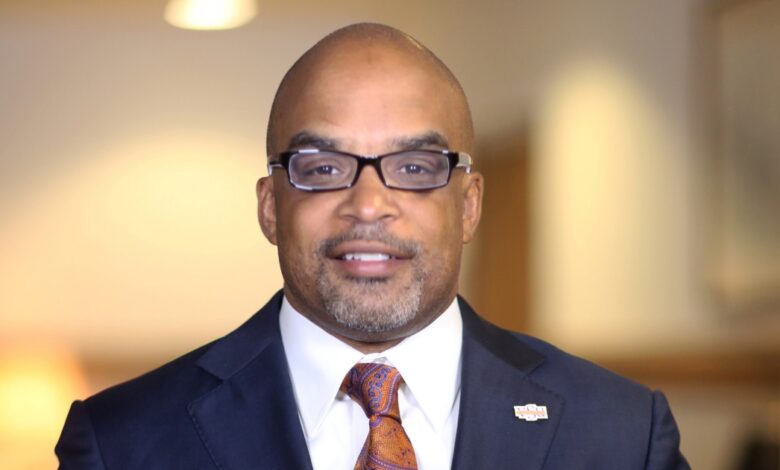
[ad_1]
A slew of colleges and universities are using Covid-19 relief funding from the federal government to clear unpaid student balances incurred during the pandemic. The City University of New York, Delaware State University, and Virginia State University are just a few of the institutions to take this step in recent days, a trend that experts predicted would spread to even more campuses.
“I suspect you’ll see many more schools also making this move to help students out who have been impacted by circumstances caused by the pandemic,” said David K. Sheppard, chief legal officer and chief of staff at the Thurgood Marshall College Fund, which represents historically Black colleges and universities.
The debt forgiveness, which does not extend to private or federal student loans, is made possible by the pool of money allocated by Congress to colleges — most recently by the American Rescue Plan Act of 2021 — a portion of which can be used only for direct student aid.
Hundreds of dollars in unpaid debt to campuses can be enough to sink a student’s educational prospects. And Covid has made matters worse. A December survey found that students’ worries about their ability to pay their tuition had only increased in the fall semester.
At Virginia State, administrators saw an uptick in students who were struggling to pay their account balances during the academic year, said Makola M. Abdullah, the HBCU’s president. Abdullah saw them navigating job losses, insufficient internet access, and financial insecurity firsthand. He said he didn’t want those struggles to keep students from continuing their education.
HBCUs serve disproportionately first-generation and low-income students, Sheppard said. “You’re dealing with a student population that does not have a lot of resources to work with, to begin with, and that is the normal circumstance pre-pandemic,” he said. “So then when the pandemic hits, those students have a more difficult time navigating its impacts.”
For many institutions, the solution was to begin clearing students’ balances. “Whatever we could do to assist students to come back to campus, to come back to their education, we wanted to do,” Abdullah said. “We didn’t want to let their finances be determinant of whether they were able to come back to school and finish their education or, in some cases, start their education,” he said.
Virginia State spent around $1.5 million paying off the debts of approximately 1,200 students, a significant portion of the enrollment, which is about 5,400 students. Nearly 70 percent of the university’s students qualify for need-based Pell Grants, according to Abdullah.
But Abdullah stressed that Virginia State had followed the lead of similar institutions, such as Norfolk State University, which allocated $2.5 million to clear student balances in June, and Virginia Union University, which announced it was using $6.35 million to eliminate debt for more than 1,300 students the same month.
Officials at Delaware State University announced that it would cancel up to $730,655 in debt to the institution for recent graduates who had faced hardship during the pandemic. For Semaj Hazzard, president of the university’s Student Government Association, the initiative gave students the “break that they deserve.”
“Let’s make it easier so that people that come from various backgrounds, where they potentially wouldn’t have been able to afford college, can afford college,” Hazzard said.
It’s not just HBCUs that are cutting their students a break. Community colleges, state universities, and private colleges have also hopped on the bandwagon to serve their students in need.
The Community College of Philadelphia announced that it would use institutional funding to pay off more than $2.75 million in outstanding account balances for approximately 3,500 students. The City University of New York also plans to eliminate up to $125 million in unpaid debt for at least 50,000 students and recent graduates of the huge system.
Federal money is undoubtedly a help. But some experts say policy makers should do more to help with the anchor institutions in economically distressed communities as the country navigates toward recovery from the pandemic. A policy proposal from the Brookings Institution, a nonprofit public-policy organization, suggests providing federal grants of $25 million to $50 million, paid over five years, to regional public universities in such communities. “It takes more than just passing a one-off bill to support a lot of these places and a lot of these institutions,” said Robert Maxim, a senior research associate of the Metropolitan Policy Program at Brookings and a co-author of the plan.
Meanwhile, the Education Department announced on Thursday a new disbursement of $3.2 billion in relief money. Of that sum, $1.6 billion will go to historically Black colleges and universities, $143 million to tribal colleges, and $1.19 billion to other minority-serving and underresourced institutions.
[ad_2]
Source link


